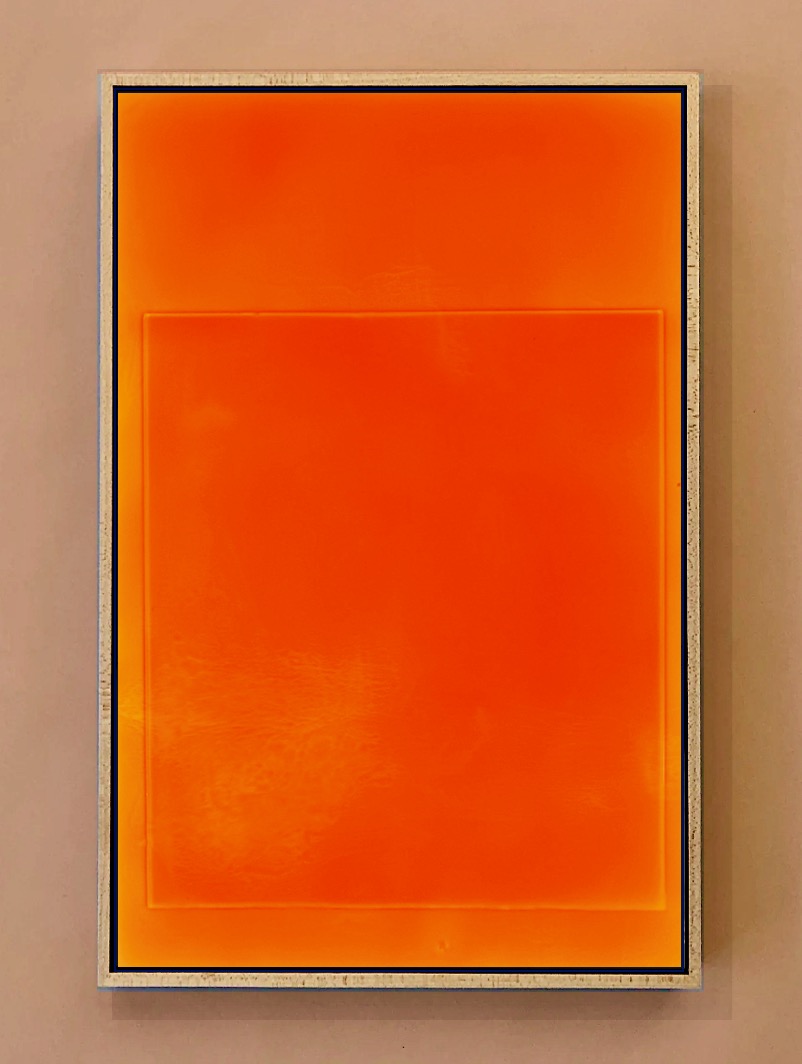

Title: Custom Orange Lacquer Epoxy Abstraction Painting By Lola
Shipping: $29.00
Artist: N/A
Period: Contemporary
History: Art
Origin: North America > United States
Condition: N/A
Item Date: N/A
Item ID: 119
Custom paintings, available in any size or color, are crafted through the manipulation of tinted epoxy resin to form unique abstractions. The process begins with a careful selection of colors, each chosen to convey a specific emotion that resonates with the artist's emotional self. As the resin is poured, a dialogue emerges as forms take shape on the surface, resembling characters in a play. These forms guide the artist in creating their distinct shapes, fostering interactions and engagement among them. The unspoken language between these forms, akin to characters on a stage, is not audible but rather felt on an emotional level. The challenge lies in leaving the emotion unidentified, allowing viewers to interpret and connect with the artwork in their own way. With each piece, the artist strives to create a profound experience, encouraging viewers to think, feel, and discover their unique and significant meanings within the composition. One such creation is available in the dimensions of 72x48, priced at $13,000.
Minimalism as an abstract art movement emerged in the mid-20th century as a reaction against the complexity and emotional intensity of preceding art movements, such as Abstract Expressionism. The roots of minimalism can be traced back to the works of artists like Kazimir Malevich and Piet Mondrian, who explored geometric abstraction in the early 20th century. In the 1950s and 1960s, artists like Frank Stella, Donald Judd, and Agnes Martin began to actively embrace minimalism as an aesthetic philosophy. Minimalist art sought to strip away unnecessary elements, focusing on essential forms, geometric shapes, and a reductionist approach to artistic expression. The emphasis was on simplicity, precision, and a rejection of traditional artistic conventions. Key characteristics of minimalism in abstract art include the use of geometric shapes like squares, rectangles, and circles, a limited color palette, and a focus on the relationships between forms and the viewer's spatial experience. Minimalist artists often employed industrial materials and techniques, contributing to a sense of neutrality and objectivity in their works. Minimalism also found expression in sculpture, with artists like Donald Judd creating three-dimensional works that embodied simplicity and repetition. The minimalist movement extended beyond visual arts to influence architecture, design, and even music. The idea was to create art that existed in its purest form, devoid of narrative, emotion, or extraneous details. Minimalist artists aimed to engage the viewer's perceptual experience directly, inviting contemplation of form, space, and the interplay of elements. While minimalism faced criticism for its perceived coldness and detachment, it significantly impacted the trajectory of modern and contemporary art. The movement continues to influence artists today, with minimalist principles evident in various forms of abstract expression across different mediums.